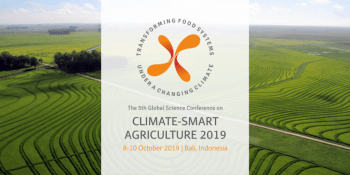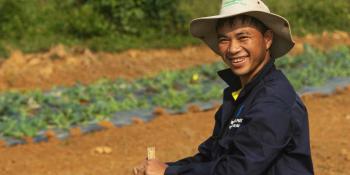Central America can fight back against climate change by envisioning its future today

More than ever, Central America urgently needs climate adaptation and mitigation. But how do we deal with the uncertainty of future climate change?
Crippling drought has tormented Central America for many months now. Severely damaged crops and coffee plantations have meant great suffering for farm families, while increasingly dry conditions prevent any sizeable yields.
It is now certain that the region has not seen the last of dry spells and other extreme climate events either, but merely the beginning.
To confront climate change head on, upfront planning is required. Therefore, just like top British scientific institutions recently urged governments to get serious about climate change, we too urge for forceful climate adaptation and mitigation efforts for Central and South America’s agriculture production guided by climate science and scenario-guided policy planning.
Ways for better decision-making under climate change
We have seen that development plans and policies are often based on assumptions about current political or social circumstances that might easily change. This does not prepare a country well enough for a tomorrow that is increasingly uncertain and demanding. Planning for the future under climate change is difficult - but not impossible.
Scenario-guided policy planning is a tried and tested method for complex decision-making, developed by a team at the CGIAR Research Program on Climate Change, Agriculture and Food Security (CCAFS) and the University of Oxford. The activities are ongoing in five global regions, and have reached Latin America with the support from University for International Cooperation (UCI) and the International Centre for Tropical Agriculture (CIAT).
The method helps decision makers take into account uncertain aspects about the future when either fine-tuning or developing national plans and strategies.
To do so, stakeholders involved in the process collectively envision possible futures and development pathways for a country or region based on socio-economic, political and environmental factors that are highly uncertain, but can have a strong impact on country development. These factors could be everything from population growth, available water and natural resources political stability or economic development, and of course climate impacts and projections.
The idea is to work backwards from the outlined scenarios, both positive and catastrophic ones, while testing policies against the different visions. This helps guide participating policy makers, national planners, scientists and non-governmental organisations to make appropriate adjustments to draft development strategies or investment plans. Making these adjustments today can help ensure policies and plans remain relevant in the future.
Scenarios work around the world
The work and method have already made quite an impact. In Cambodia, the Climate Change Priorities Action Plan for Agriculture (CCPAP) now features a scenario-guided priority setting to better deal with climate change. In Tanzania, the government is currently drafting its third version of the new National Environment Management Policy, which contains scenario-guided improvements.
In Honduras, a recently held workshop with the Secretariat of Agriculture and Livestock (SAG) looked at how the climate adaptation strategy for agriculture and livestock, developed using scenarios, can be translated into regional policy plans. The entire scenario process has attracted decision makers from the Secretariat and other regional municipalities, researchers, farmers and local organisations.
The progress has been made possible through its dedicated team, engaged stakeholders and a strong partnership across the globe, supported by organisations such as World Resources Institute (WRI), the United Nations Environment Programme's World Conservation Monitoring Centre (UNEP-WCMC) and Indigenous and Peasant Coordinating Association for Central American Community Agroforestry (ACICAFOC).
Uncovering the impact of scenario-guided policy planning
Policy planners involved in the activities have mentioned how the work has helped them look at other aspects and elements that can impact and form the policy to ensure the strategy or plan is made more realistic and inclusive.
Through exploring possible changes in the environment, involved coffee farmers from Central America feel they can now better understand what climate change will mean for them and through scenario-thinking create climate adaption plans that work for them.
We think it is now time for more countries in Central and South America to think progressively about how they will prepare for climate change. Climate-proofing methods and solutions are out there, and with engaged and open-minded participants, countries can start planning for a climate resilient and food-secure future.
Learn more about Future Scenarios: Scaling out scenario-guided policy and investment planning
Opinion piece written by Ana-Maria Loboguerrero, Program Leader at CCAFS Latin America regional program and Marieke Vegeer, regional coordinator of the Future Scenarios Program for CCAFS Latin America.



